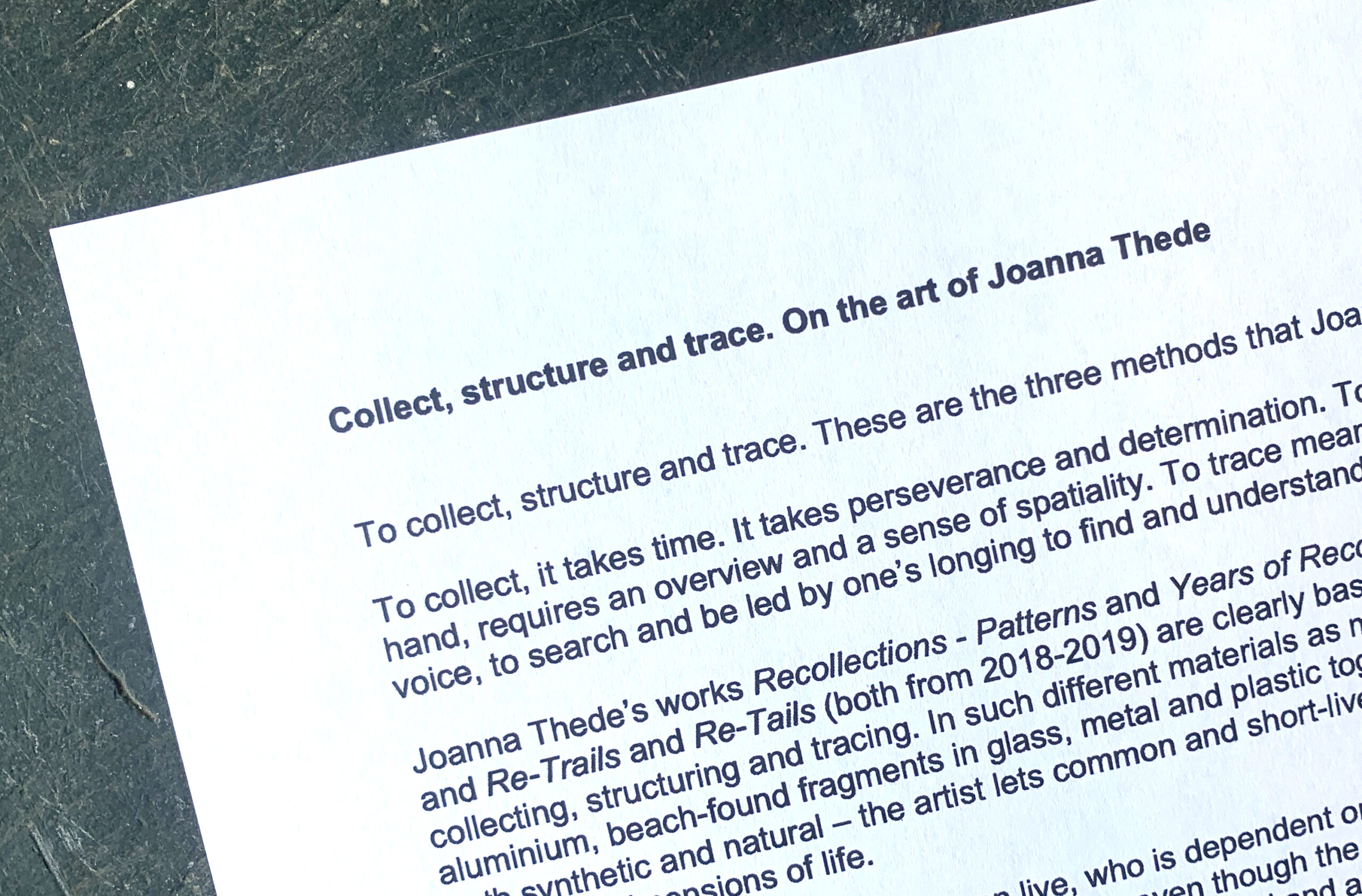Text by Linda Fagerström
Here is a text by art critic Linda Fagerström to go with the art catalogue:
–
Collect, structure and trace. On the art of Joanna Thede
To collect, structure and trace. These are the three methods that Joanna Thede works with.
To collect, it takes time. It takes perseverance and determination. To structure, on the other hand, requires an overview and a sense of spatiality. To trace means to follow an inner voice, to search and be led by one’s longing to find and understand.
Joanna Thede’s works Recollections – Patterns and Years of Recollections (both from 2015) and Re-Trails and Re-Tails (both from 2018-2019) are clearly based on the methods of collecting, structuring and tracing. In such different materials as medicinal blister packages in aluminium, beach-found fragments in glass, metal and plastic together with braided hair – both synthetic and natural – the artist lets common and short-lived objects represent the existential dimensions of life.
Under what conditions does a person live, who is dependent on a medicine to survive? Why do we continue to poison the world’s oceans, even though the consequences are devastating? Can the status difference between natural and artificial hair tell us something about interpersonal hierarchies based on the colour of one’s skin and economy?
Another common trait in these sculptural installations is the strong impression of pattern, creating rhythm and motion. Simultaneously, a suggestive effect appears when a collection of uniform objects is joined in this way into one single, larger body. The eye thus forced to shift between, on one hand, seeing the individual part in the overall image and, on the other, grasping the large form.
In consideration of Joanna Thede’s readily use of already existing objects, her art can be described as a kind of collage. The meeting between smooth and rugged, elegant and disgusting, creates visual collisions, leading to the appearance of new possibilities of interpretation.
A hundred years ago, the artists calling themselves Dadaists and Surrealists sought precisely this kind of bewildering, contradictory experiences. In Stones and Bones (from 2020), she uses materials that evoke just these split feelings: smooth, sea-sanded stones next to skeleton parts and bone remnants from bird and fish.
The long, hand-knitted textiles in Green Reflections (from 2022) bring to mind the French-American artist Louise Bourgeois (1911-2010), who in her textile sculptures and large-scale installations embodied memories and childhood traumas in yarn and tapestry fabric.
A similar approach is used by Joanna Thede in The Way Home (1998), where an old salvaged blouse is embroidered with blood-red lines to draw the traces of the artist’s travels. Simultaneously, the sewing thread becomes a frenetic bloodstream with the heart or home as a pulsating, radiant center – a reminder of the transience of life and, perhaps, of never stopping to collect, structure and trace.
/ Linda Fagerström, freelance art critic and associate professor in Art history & visual studies at Linnæus University, Sweden
–
